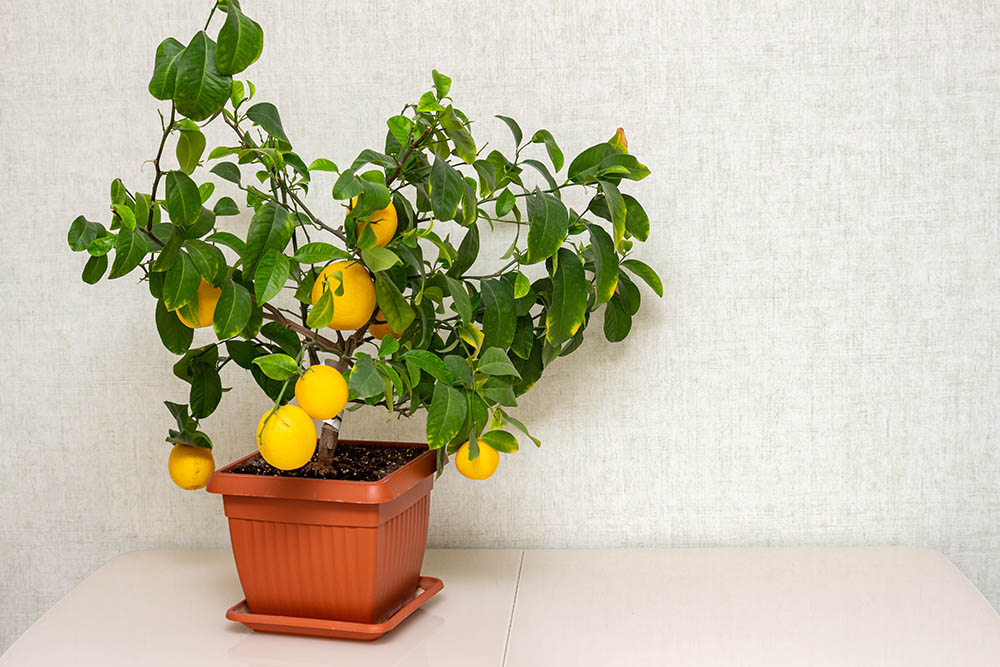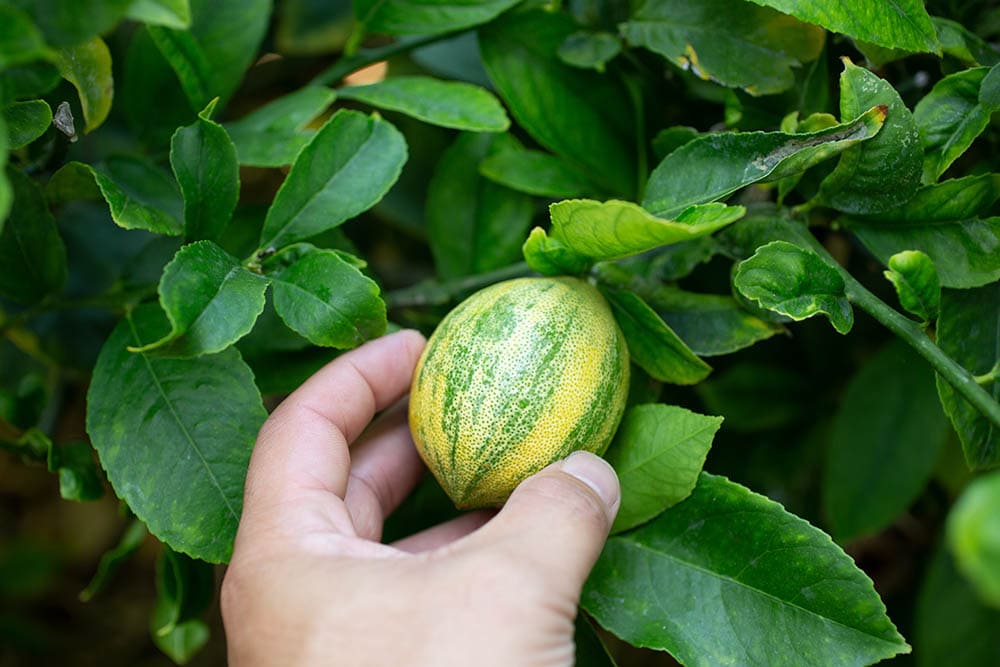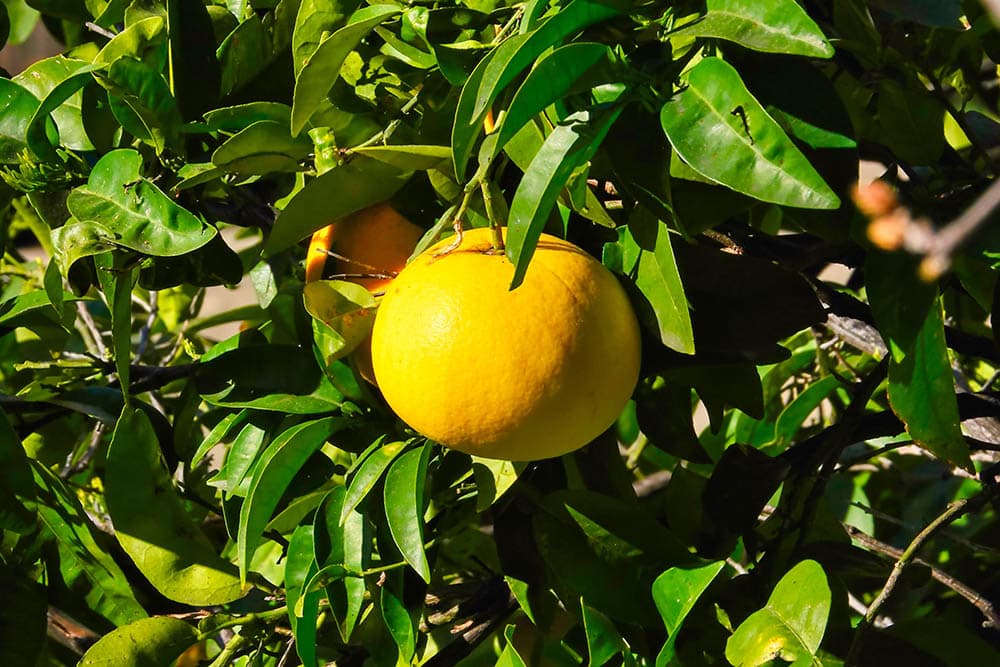How to Grow a Lemon Tree Indoors — Tips, Tricks, and Guide
-
Ed Malaker
- Last updated:

Lemon trees can greatly improve the environment of your home. They have sweet-smelling flowers that are fragrant but not overpowering, and you can enjoy the fruit all year long. Many people want to know how they can start growing lemon trees in their homes. Fortunately, it is not that difficult! Keep reading as we provide you with a step-by-step guide to growing these trees in your home, along with tips and tricks that will improve your chances of success.
How to Grow a Lemon Tree Indoors
1. Choose Your Tree

The first step in growing a lemon tree indoors is selecting your tree. There are many varieties available, and some can grow to more than 20 tall. You will likely want to find a dwarf variety that will stay manageable and begin producing fruit sooner than normal-sized trees. Popular indoor growing types include the Dwarf Improved Meyer, Dwarf Ponderosa, and Dwarf Variegated Pink Lemonade. You can purchase your lemon tree online, from a local farmer, or many home improvement centers.
Dwarf Improved Meyer
The Dwarf Improved Meyer is easy to grow indoors all across the United States. It is a cross between the lemon and the mandarin orange, so you get a sweeter-tasting lemon that many people enjoy. These trees often stay under 4 feet tall and produce fruit throughout the year.
Dwarf Ponderosa
The Dwarf Ponderosa is a great choice for indoor growing. It is a lemon and citron mix that produces lemons and flowers at the same time. The lemons are quite large and are perfect for juices. The downside to these trees is that they are a little large and can grow to 10 feet or more.
Dwarf Variegated Pink Lemonade
The Dwarf Variegated Pink Lemonade is a popular variety for indoor growing. It usually grows to about 6 feet tall, and it’s easy to maintain as long as you keep the temperature above 30 degrees Fahrenheit.
2. Choose the Perfect Pot
Size
Once you have the kind of tree that you want to grow, you’ll need to select a pot to put it in. Many people tend to pick a larger pot that the tree can grow into, but too much soil can make it hard to tell if it needs water, so it’s usually better to start with a smaller pot. If the tree is fresh from the nursery, start with a container 12 inches in diameter. You’ll need to slowly double the size of the pot as your tree grows.
Plenty of Drain Holes
It doesn’t matter what type of pot you use, but it should have large holes for drainage, so no water gets trapped inside. You’ll also need to make sure you have a saucer or other means to catch the draining water, so it does not damage your floor.
Light-Colored Container
Lemon trees like sunlight and cool roots, so most gardeners recommend that you choose a light-colored container because black and other dark colors can heat up in the sunlight. You might also want to place it on a cart or dolly, as they can get quite heavy as they grow.
3. Plant Your Lemon Tree

Choose the Right Soil
Lemon trees like well-drained but moist soil, so choosing the right potting mix can help. Most experts recommend using a mix for palm trees or citrus plants, as these tend to work the best at preventing the roots from getting too wet or dry.
Oxygen
To plant your lemon tree, start by adding soil to the pot and gently packing it down. Continue to fill the pot until you reach the right depth for the root ball. You will want the flare of the tree to sit just above the soil line when you finish, and there should be a few inches at the top for watering. The lightly packed soil will provide a soft but sturdy base that won’t let the tree settle too deep as you water it.
Plant Starter
You can add a plant starter with vitamin B1 to reduce transplant shock and provide essential nutrients to help your tree grow better by speeding up root growth. Many brands are available, and you can usually find them wherever you buy your plants.
4. Place Your Lemon Tree
Lighting
Lemon trees will do best if you place them near the south-facing windows of your home. The most important thing is that they receive at least 8 hours of light per day, so you might need to move the tree around or even use artificial lighting.
Temperature
The good thing about lemon trees is that they grow best when temperatures stay right around 65 degrees. This is close to room temperature in most homes, which is why these trees grow indoors so well. However, they don’t like drafts, so you will want to keep them away from any heating ducts or air conditioner vents where the air can blow on them.
5. Water Your Tree

The best way to water your tree is to water it thoroughly until water begins draining from the holes in the pot. Then, allow it to dry about 3 inches deep before watering again. You can also use a moisture meter to help maintain proper soil hydration.
6. Fertilize Your Tree
Fertilizer is important for pot-bound plants because it’s harder to get the nutrients that they need. For your lemon tree, look for something that has a formula for citrus fruits to help your tree grow better, and follow the instructions on the container carefully.
Other Tips
- Yellow leaves are often a sign of soggy soil or nutrient problems.
- When your flowers are blooming, gently shaking the branches will help spread the pollen, which will help the tree produce more fruit.
- Most indoor lemon trees do not require pruning. If you have one of the few indoor lemon trees with thorns, you’ll need to prune away the thorns and shoots near the soil level.
Summary
As you can see, growing a lemon tree in your home is not that difficult. Choosing the tree is important, and we recommend the Dwarf Improved Meyer because it’s a nice size and produces great-tasting fruit. Get a pot suitable for the size of your tree that has plenty of large drainage holes, and fill it with citrus-blend soil, and you are good to go. Water it when needed and fertilize it with citrus nutrients, and you will have great-tasting fruit all year, as well as attractive aromatic flowers.
Featured Image Credit: Ivan Semenovych, Shutterstock
Contents
